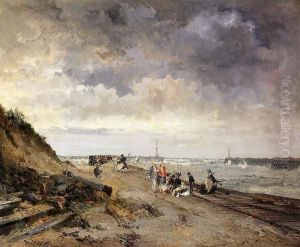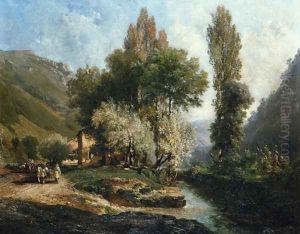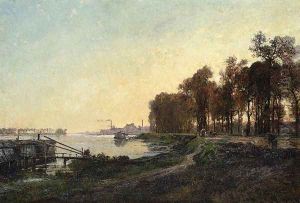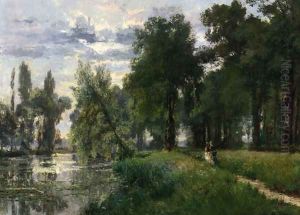Alexandre-Rene Vernon Paintings
Alexandre-Rene Vernon was a French painter whose contributions to art are remembered for their poetic interpretation of nature and delicate execution. Born in 1891 in France, Vernon emerged as an artist in a period rich with innovation and experimentation, as the art world was transitioning from the traditions of the 19th century to the modernist movements of the 20th century. Throughout his career, Vernon was less influenced by the radical shifts in art movements around him and more dedicated to refining his personal vision, which often centered around the serene and the beautiful. His works are characterized by their soft colors, meticulous attention to detail, and a harmonious tranquility that invites contemplation.
Vernon's education and early career were marked by traditional training, but he gradually developed a style that, while not belonging to any of the major movements of his time like Cubism or Surrealism, held a distinct place in French art. He was particularly known for his landscapes and still lifes, which showcased his ability to capture the subtleties of light and atmosphere. His paintings often depicted the French countryside, coastal scenes, and intimate interior settings, imbued with a sense of timelessness and an almost ethereal quality.
Throughout the 1920s and 1930s, Vernon participated in several exhibitions, both solo and group, gaining a respectable following and the admiration of critics and collectors alike. His work was recognized for its elegance and for a certain quietude that seemed increasingly precious in the fast-changing modern world. Despite the tumultuous times, including two World Wars and the interwar period, Vernon's art remained a sanctuary of peace and beauty, reflecting his personal retreat from the harsher realities of his era.
Alexandre-Rene Vernon's contribution to art was his ability to evoke emotion and beauty through a refined and gentle approach to painting. Although he may not have achieved the same level of fame as some of his contemporaries, his works are cherished for their serene beauty and the skillful precision with which he portrayed the natural world. He continued to paint until his death in 1952, leaving behind a legacy of artwork that continues to be appreciated by those who seek solace and beauty in visual form. Vernon's paintings reside in various collections and museums, testament to the enduring appeal of his quiet yet profound artistic voice.



